Published:Dec 17, 2019 at 7 PMUpdated:Dec 17, 2019 at 7 PM Sakthi Vikatan
சக்தி கொடு! - 18 Give Sakthi - 18
சக்தி விகடன் டீம் Sakthi Vikatan Team
மார்கழி மகிமைகள்! The grandeurs of Margazhi
வி.ஆர்.சுந்தரி V.R. Sundari
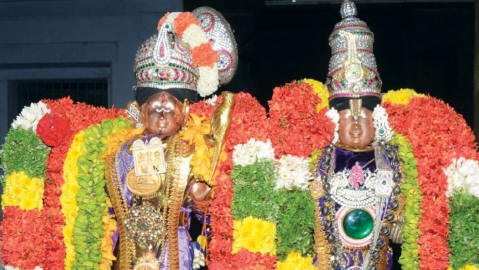
BG10.35: Of the hymns in Sama Veda, (I am) Brhatsama; of meters, I am Gayatri; of months (I am) Margasirasa (Nov-Dec); of all seasons, I am flower-bearer (spring).
2. What is one day for Devas is one year for humans. The daytime for the Devas is Uttarāyaṇa, and the nighttime is Dakṣiṇāyaṉam. Six months, from Thai to Āṉi month, is Uttarāyaṇa; six months from Ādi to Mārgazhi is Dakṣiṇāyaṉam. The month of Mārgazhi is Brahma Muhūrtam, by the observance of which we conduct worships of gods.
3. Mārgazhi: Is it a month of sorrow or a great month?
4. Because Margazhi is the best month of celebration for the worship of Gods from time immemorial, People conduct no auspicious events in this month.
5. ‘Catch Piḷḷaiyār in the beginning and end up with the monkey.’ People begin an auspicious work with the worship of Piḷḷaiyār and complete the work with the adoration of Āñjanēyar. Initiation and ending of Bajaṉai (Chanting devotional songs) entail dual worship of this nature: Worship of Vināyakar beginning in Mārgazi and its end with Āñjanēyar Jayanthi (birthday celebration).
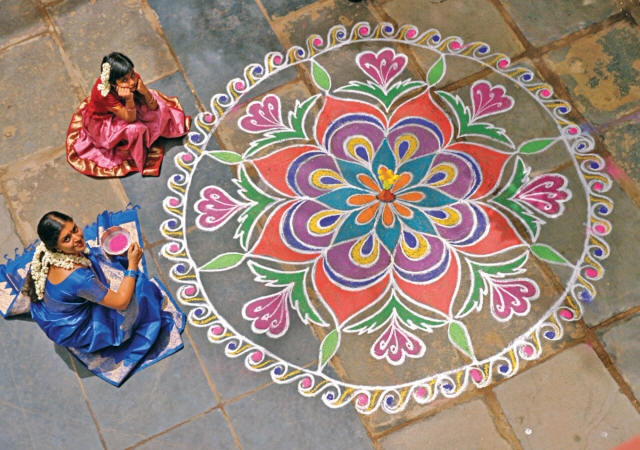
6. Mārgazi is chock-full of pride and glory and goes by the name, Pīdai Mātham (The Pride of a Month) as regarded by the people.
மார்கழிப் பிள்ளையார் Māragzi Piḷḷaiyār
6. Devotees rise two hours before sunrise in the month of Mārgazi and complete all the Karma Aṉuṣtāṉams (Daily observances). They scrub the house clean and draw Mākkōlams (decorative Drawings with rice flour) in the front yard after preparing and polishing it with cow dung.
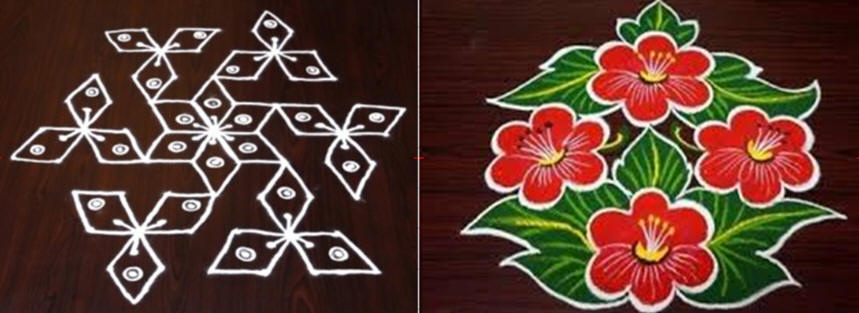
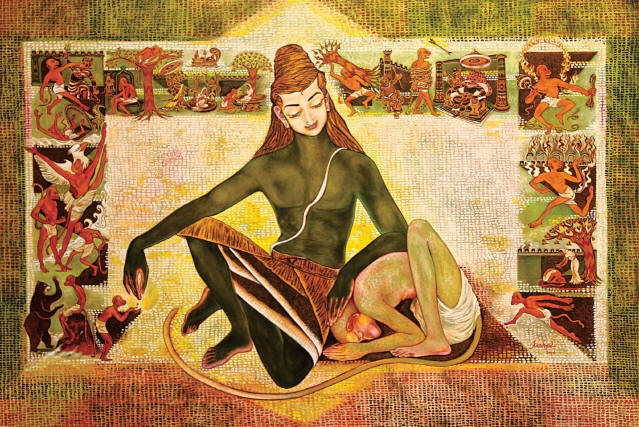
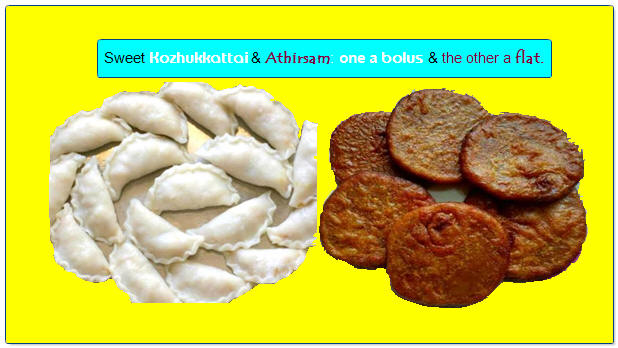
Early mornings in the month of Mārgazi is an auspicious time of the day.
10. The birth of Mārgazi generates a great deal of enthusiasm in the villages. They take a shower early in the morning, chant the Nāmāvaḷi (list of God’s names), sing devotional poems and songs and do the Street Bajaṉ accompanied by musical instruments. Before all these celebrations, the womenfolk smear the front yard with cow dung slurry and draw Kōlams. Sometimes, the womenfolk spread pumpkin flowers on the Kōlams.
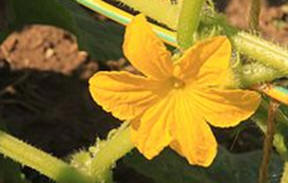
12. Could there be a Mārgazi month without Kōthai Āṇḍāḷ? We all know the sacred story of Sudarkodi’s bequeathal of overnight-worn flowers to Thirvarṅgaṉ, the greatness of Thiruppāvai and Bhagavan’s acceptance of Āṇdāḷ as his servitor. Many of us are not aware of a latter-day king on the cusp of a dream wrote Āṇḍāḷ’s history in the poetic style.
The greatness of Mārgazhi
13. The dream of a 15th-century king brimming with charm gave us a marvelous poem.
14. Chakravarthy Krishna Dēvarāyar ruled over the Vijayanagara empire. Many parts of Tamil Nadu were under his sovereignty. Then, Krishna Dēvarāyar worshipped at the Villiputthūr, praised by the devotees as the birthplace of Kōthai (Āṇḍāḷ) and the residential town of the Gōvindaṉ. The area’s fertile fields and the greatness of the Divya Kṣētram (Divine place) haunted his mind and soul. Once, Krishna Dēvarāyar went to Śrīkākuḷam, where the resident blessed God’s holy name was Thiruvēṅkatam.
15. One day, in his dream, Thiruvēṅtamuḍaiyār gave the king a Darsan. “Krishna Dēvarāyā! You wrote in Sanskrit many treatises. But you did not write a literary work in your mother tongue Telugu. You must write poems in Telugu.
16. “In Dvāpara Yuga, Sudāma (Kusēlar) worshipped me with flower garlands. Let it be so. Is it not proper for a man to receive a flower garland from a lass? This deficiency, the ŚrīVilliputtūr-born Avatar Āṇḍāḷ rectified in later years. She came to Bhūlōka Vaikuntam (Heaven on earth), Śrīraṅgam, garlanded me and made me joyous. You must write a poem about Āṅḍāḷ’s historical biography in Telugu.”
17. The dream ended. Kārmēka Vaṇṇaṉiṉ’s (Krishna of the color of dark clouds) form and words were flapping their wings (cogitation) in mind.
18. “Long live the composer of 143 verses!” Krishna Dēvarāyar wrote the poems in Telugu, and their name is ‘Āmuktha Māyathā.’ These 900 poems in Telugu, describing the spiritual life of Āṇḍāḷ, shine as one of the five most excellent compositions.
Sundarakāṇdam Sarvarōka Nivāraṇi!
19. Hanuman Jayanthi celebration adds more greatness to the beautiful month of Mārgazi. Āñjanēyar’s Avatar took place in Mārgazi month on Mūla Nakṣathiram day.
20. The Mahāṉs expressed amazement regarding Āñjanēyar’s greatness.
21. Mahāṉ ŚrīMadhusūdhaṉa Sarasvati Swāmigaḷ refers to Prahalāthaṉ, Āñjanēyar, and the Gopis as ‘Bakthas without attachment and expectation of fruits of their labor. The foremost among them is Āñjanēyar.
22. Rāmar, in a heartfelt utterance, grace, and blessing, says, “Āñjanēyā! As long as my story is the topic of interest and narration, your fame will be ascendant. You will live that long! I will be in debt to you forever. An offer of the three worlds, and I will not satisfy my debt to you. I will always fructify your desires.”
23. Thyāgrarāja Swāmigaḷ says, “The Amsa of Sākṣāth Paramēsvarar came as Āñjanēyar, who performed yeoman services to Viṣṇu’s Avatar, Rāmar.”
24. ‘’Anthakāri nī sentha jēri aṉmanhthudai koluvalēthā
25. “The Timeless Paramēṣvara came close to you: Did he not perform loyal services to you.”
26. Just not Thiyāgarājar alone. Aruṇagirināthar himself expresses the same sentiment: Rūdrar is the illustrious Hanuman.
27. Āñjanēyar’s mother Añjanādēvi name her son Sundaraṉ. That is why Vālmīki called the section as ‘Sundara Kāṇdam,’ which narrates Āñjanēyar’s birth, history, and valiant exploits.
28. The Sundara Kāṇdam extolling the qualities of Āñjanēyar is a Sarvarōga Nivāraṇi (All-disease Preventive and Remover). The prevailing belief is whatever may be the malady, recitation of the Sundara Kāṇdam ensures removal of that hardship.
29. The people who cannot recite the Sundara Kāṇdam in its entirety, chanting of the Kamba Ramayana verse as below, will yield the same results as the recitation of Sundara Kāndam.
30. The Five Elements and the Action Correlates:

32. The five elements are Air, Water, Ether or Sky, Earth, and Fire. Vāyu Bhagavan’s son Āñjanēyar jumped over the Ocean, flew through Air to Laṅkā on behalf of Rāmar, met with the daughter of Bhūmādēvi (Goddess of Earth), and set Laṅkā on Fire. He will protect us.
33. Do you feel like asking, “Why did you drop Thiruvāthirai and Vaikunta Ēkādasi?
34. We will present important information about those wonderful holy days.
- வளரும்... will grow.
மார்கழிக் கோலத்தில் பூ வைப்பது ஏன்?
Why do we place flowers on the stylized diagrams?
1. In the days of our ancestors, there was no matrimonial section, advertisements, and intermediaries seeking brides or grooms. In front of the houses of the prospective brides and grooms, the householders place pumpkin flowers on the Kōlams. Generally, the householders do not place flowers on the Kōlams.
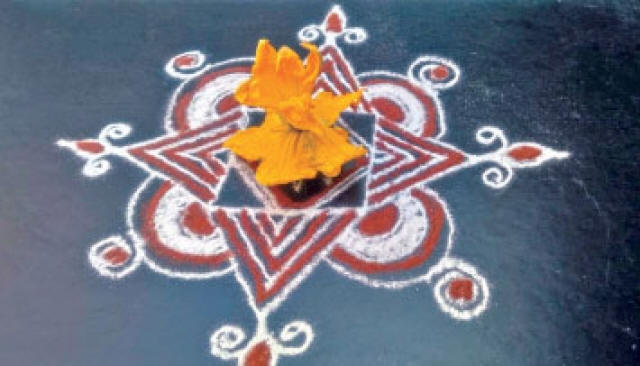
2. Mārgazhi month early risers on their Bajanai rounds do notice the flowers in the front yard and understand the matrimonial need of the family. The concerned parties, on the birth of Thai month, will conclude the talk about the wedding.